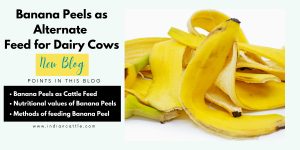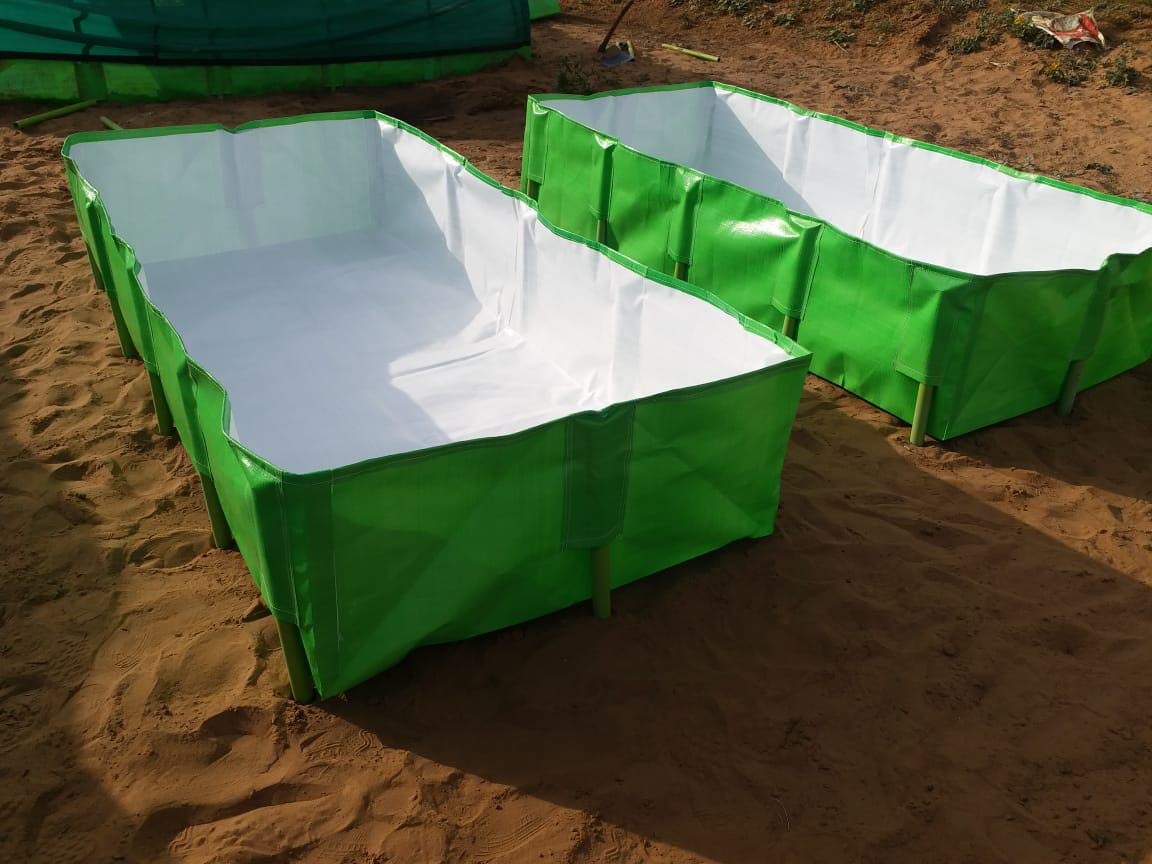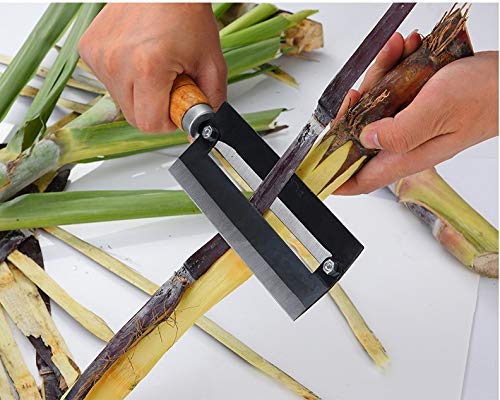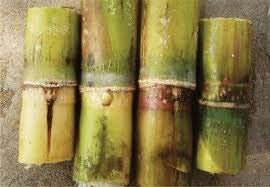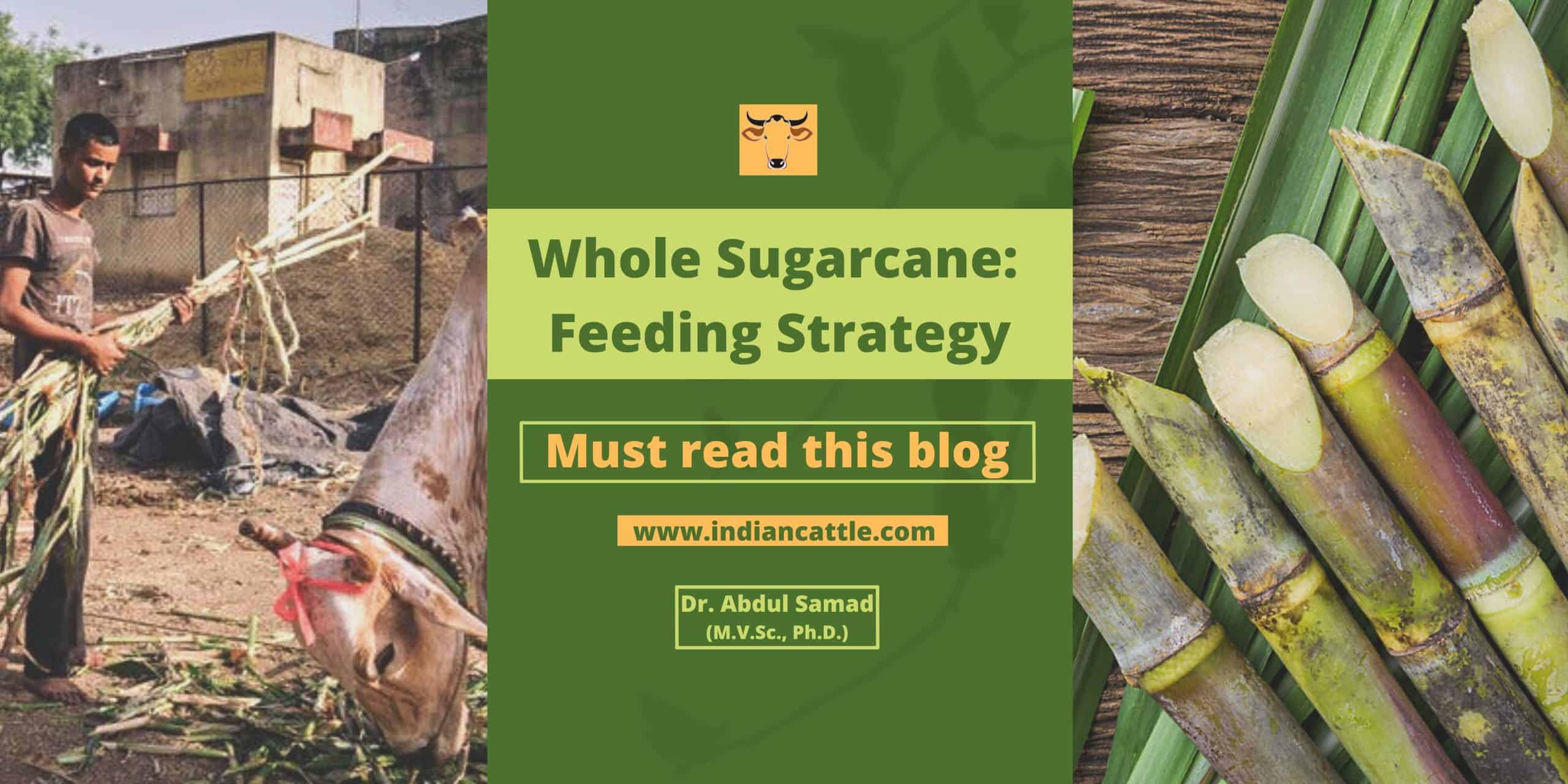
Whole Sugarcane: Feeding Strategy
Introduction
The use of whole sugarcane as cattle fodder is a common practice in India and South American countries. It probably originated as a summer food source when other fodder was not readily available. Feeding of sugarcane plants is being practiced since the early 1970s when sugar factories in Cuba and other countries faced a crisis and farmers were forced to adopt alternate use for their crops. In many states, sugarcane is a preferred crop of farmers since it is perineal hence easy to cultivate; has good growth characteristics, and has better biomass availability compared to conventional fodders. The cultivation of harvesting is integrated and manned by sugar factories leading to a lower work burden on the farmland owner. In rural sugarcane belt areas in India, it is not uncommon to see farm laborers working in the sugarcane field carrying a stack of sugarcane on their head, bicycle, or bullock cart, as a part of their labor compensation.
These are mostly landless farmers owning a few cows and buffaloes. Due to a lack of correct information on sugarcane feeding they end up under-nourishing their stock compromising health and fertility. The objective of the present paper is to offer information on sugarcane feeding in an easy-to-understand format. Veterinarians are requested to take this extension information to their farmers.
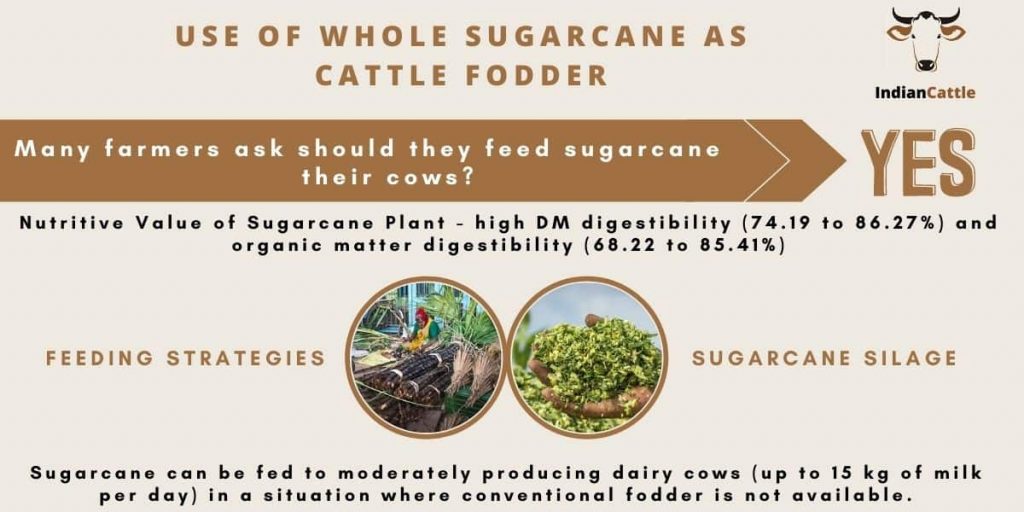
Many farmers ask should they feed sugarcane to their cows?
The answer is YES provided that the other ingredients are properly balanced. Let us first understand the basics of sugarcane feeding and its potential adverse effects if fed alone without the addition of supplements.
Nutritive Value of Sugarcane Plant
The nutritive values of sugarcane are given in the table shown below. In general, sugarcane is low in crude protein and high in fiber. While it is generally perceived to be low-quality fodder, it has high DM digestibility (74.19 to 86.27%) and organic matter digestibility (68.22 to 85.41%) suggesting its good potential as ruminant feed. The problem appears to be in educating farmers to balance feed to overcome the adverse effects of sugarcane feeding. A number of publications have shown that sugarcane feeding, supplemented with protein, minerals, and vitamins to support rumen microflora can overcome these side effects. In Cuba, a product under the name “Saccharina” is available which contains 14% crude protein and 90% DM, prepared by adding 15 kg urea and 5 kg minerals to every ton of chopped sugarcane. The mixture is then dried before marketing. Since it is dried, the shelf-life is longer.
This product could be a good alternate for sugarcane factories who due to overproduction are not able to process sugarcane.
Feeding Strategies: An important principle is that rumen microflora in cows fed with sugarcane should be supported to satisfy the needs of fermentable nitrogen (ammonia, urea) and trace nutrients (peptides, amino acids, minerals, and vitamins). It is also necessary to supplement bypass protein, glucose precursors, and long-chain bypass fatty acids. Urea should not be fed at a rate exceeding 2-3% of the concentrate or grain portion of the feed and should be limited to less than 1% of the total feed. In some countries, 10 kg urea is added per ton of fresh sugarcane and fortified with minerals, vitamins, and propionate. A note of caution, when urea is to be supplemented; do it in phases slowly increasing the urea levels for enabling rumen microflora to adapt to NPN use. Urea can be replaced with supplementing legume fodder such as Lucerne @ 600 g / per100 kg live weight. Rice polishing @ 0.5 – 1.0 kg per day is considered the best source of by-pass nutrients because of its richness in essential amino acids, starch, and lipids. Other protein supplements such as oilseed cakes or fishmeal also yielded good results (e.g. raw soybean, cottonseed meal, soybean meal, maize/ fishmeal concentrates). An important principle to keep in mind is that when urea is supplemented it must be combined with protein supplementation.
Sugarcane inclusion should not be more than 40-45 % of the diet. At this level, protein supplement could be through soybean meal + urea at a low level (10 g / kg DM), soybean meal + urea at a high level (17 g / kg DM), raw soybean, or corn gluten meal. Out of these soybean meal + urea at a low level was found to give the highest milk yield. In case Lucerne or other leguminous fodder is available these can be supplemented and in that case, urea supplementation should be avoided. Sugarcane is not recommended in high-producing dairy cows, especially during peak. In India, it is a common practice to feed 20-22 kg sugarcane to crossbred cows producing around 10-15 kg milk per day. But these cows have low body condition scores and suffer from sub-fertility especially delayed oestrus and conception. This can be averted if the properly balanced feed is fed as described above.
| Parameters | Value | Parameters | Value |
| Dry matter | 38-42 % | NDF | 57.5% |
| Crude protein | 3.9-4.3 % | ADF | 34.8% |
| Crude Fibre | 34-38% | Ca | 2.2% |
| Ether Extract | 1.5-1.7% | P | 1.3% |
| Ash | 6.5- 6.9% | Mg | 1.5% |
| Sugar | 43.9% | Zinc | 225 |
Because of its low fiber digestibility, sugarcane may limit cattle performance and inclusion levels in the diet of growing cattle may be variable, ranging from 20 to 50%. In a feeding trial post-weaning, crossbred heifers were fed on 70 % chopped sugarcane, and 30% concentrate with 13% protein which led to higher digestibility of protein and health parameters. In a feeding trial in Cuba, crossbred calves were fed on 73% sugarcane forage molasses-urea (10%) and concentrate (17%). The animals reached 840 g average daily gain when the concentrate was offered once a day and 950 g when the concentrate was offered twice a day. It was suggested that crude protein and energy were better utilized when the concentrate was offered twice.
Sugarcane Silage
Sugarcane can also be ensiled and preserved. However, because of its high proportion of soluble sugars, silage turns alcoholic and nutritive value is seriously depressed. To prevent this, it is recommended to ensile sugarcane soon after it is chopped and avoid a longer wilting period. Baling and wrapping in plastic sheets is a good option. Field studies suggest that silage quality is better if it is treated with urea (0.5%), calcium oxide (0.5%), sodium benzoate (0.1%), and lactobacillus silage inoculants. Treated silage was found to be better in terms of DM intake and composition. One disadvantage of treated sugarcane silage is that the DM intake was lower than fresh sugarcane, but these cows had higher milk fat and milk total solids. A possible advantage from ensiling appeared to be indicated by the finding that young actively growing cane was inferior in feed value but aged mature sugarcane gave better quality silage. This is because with age sugar content goes down and DM increases.
Dried Sugarcane
Chopped sugarcane can be sun-dried or oven-dried. Sun-drying is done by spreading the chopped sugarcane on a plastic sheet in a thin layer (no more than 4 cm) and letting it dry during the day under the sun and mixing it 2-3 times a day. At night, the chopped material should be kept in the shed. But open drying is an invitation to ants and other insects.
Recommendations
Sugarcane can be fed to moderately producing dairy cows (up to 15 kg of milk per day) in a situation where conventional fodder is not available. Even in the normal course, if properly supplemented, sugarcane can meet part of the fodder requirements. From available feed trial data, the following feeding strategy is recommended to farmers rearing cows giving around 12-15 kg milk per day. 15-20 kg of sugarcane can be fed with supplementation described above consisting of vitamins, essential amino acids, long bypass chain fatty acids, Calcium oxide, and other minerals that must be supplemented to overcome the problem of oxalate. The concentrate feed should be fed to balance energy requirements and protein feeding of around 500 -600 g per day and sodium/calcium propionate @ 10 g per day. Protein sources should be predominantly bypass type.
Read more: Banana Peels as Alternate Feed for Dairy Cows
